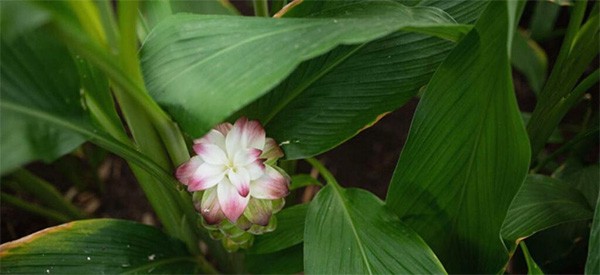
Turmeric
Turmeric, being one of the kitchen staples, is a wonderful spice that is useful in ensuring optimal health. The medicinal properties of turmeric roots have been around for several millennia. Thus, many people take its effectiveness at heart. Several studies about turmeric were also conducted by the scientific community to ensure that it is, indeed, a beneficial herbal medicine for human use.
Though turmeric primarily began in India as a primary ingredient for the Ayurvedic practice, its value and worth traveled far and wide over the years. Currently, we can see turmeric sold in stores and marketplaces all over the world.
The History Of Turmeric
The longest record of the use of turmeric dates back to the Verdic culture of India 4000 years ago. It has been used primarily as a culinary spice and also has some profound religious significance. According to Sanskrit records, turmeric has been used as a medicine in Southeast Asia for a long time. The Ayurvedic Compendium dating back to 250 BC even stated that a turmeric ointment relieves food poisoning. It spread across Asia and probably reached China around 700 AD. It also reached other continents such as East Africa by 800 AD and West Africa by 1200 AD.
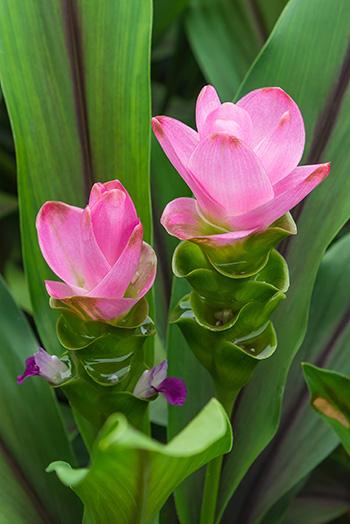
In the 13th century, Europe had a taste of turmeric. When Marco Polo was trading in the Silk Road in 1280, he wrote down about this spice and compared it to saffron. By the 18th century, turmeric became more popular all over the world. It spread to other tropical places, particularly in Jamaica.
On the other hand, the discovery of turmeric’s curcumin dates back two centuries ago. The “yellow coloring matter” was isolated by Vogel and Pelletier, for which they named it curcumin. This yellow chemical provides the spice all its amazing medicinal and culinary qualities. Vogel Jr. was notably known to have gathered a pure preparation of curcumin but he was not able to share the formula with the scientific community. It was not until 1910 when the exact chemical structure of curcumin was known.
Where Is This Plant Found?
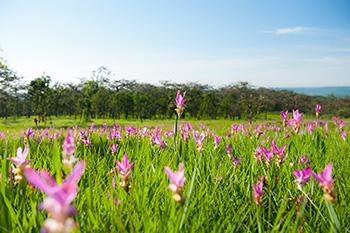 While turmeric powder is widely available in grocery stores all over the world, fresh turmeric may be quite a challenge to find. This root vegetable is often grown in Asian countries, particularly in India, China, and Vietnam. It is also widely cultivated in Pakistan, Bangladesh, Sri Lanka, and Bangladesh.
While turmeric powder is widely available in grocery stores all over the world, fresh turmeric may be quite a challenge to find. This root vegetable is often grown in Asian countries, particularly in India, China, and Vietnam. It is also widely cultivated in Pakistan, Bangladesh, Sri Lanka, and Bangladesh.
Related: The Complete Map of Edible Plants: Find Out What You Have in Your Area! (Video)
How To Identify Turmeric
- Leaf. Turmeric leaves are small to medium in size. They are oblong-shaped with an average of 80-115 cm in length and 30-48 cm in width.
- Flower. The floral structure is shaped like a cone. It is around 12 cm in length. The funnel-shaped blooms can be in various colors of white, yellow, or pink.
- Root. Turmeric root is golden in color and has a similar look to ginger root.
- Stem. Stems are green or greenish-white in color and are thick. It stands erect while holding the plant’s green leaves.
- Fruit and Seeds. Turmeric does not have the typical plant seeds as most plants do. Instead, people who want to cultivate turmeric make use of a part of the plant’s root called a rhizome. The rhizomes will produce the foliage for the plant to thrive above ground while growing large rhizomes under the soil for the best foundation.
Related: Plant Identification Guide – 400 Wild Plants That You Can Forage For (Video)
How To Grow Turmeric
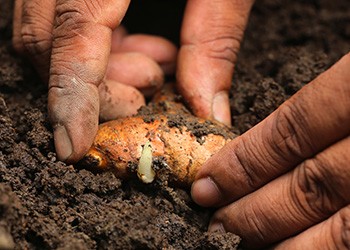 The best time to plant turmeric is in September and October when the soil is still warm. Plant the rhizomes 4 inches deep in the soil. When planting several rhizomes, keep the plants 3 to 4 ft apart to allow enough room for each growth. The rhizomes should be planted with the sprouted parts facing up.
The best time to plant turmeric is in September and October when the soil is still warm. Plant the rhizomes 4 inches deep in the soil. When planting several rhizomes, keep the plants 3 to 4 ft apart to allow enough room for each growth. The rhizomes should be planted with the sprouted parts facing up.
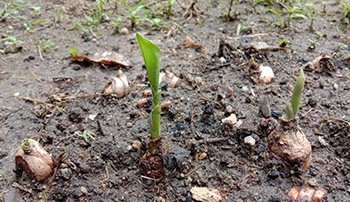 You can also start cultivating rhizomes indoors and only bring them outside soon after the last frost date. To do this, start 8 to 10 weeks before the average last frost date that your place has. Put individual rhizomes horizontally in a seed-starter tray. Make sure that this tray is well-draining. Cover the rhizomes with 2 inches of medium and keep the tray warm at 80 to 85°F.
You can also start cultivating rhizomes indoors and only bring them outside soon after the last frost date. To do this, start 8 to 10 weeks before the average last frost date that your place has. Put individual rhizomes horizontally in a seed-starter tray. Make sure that this tray is well-draining. Cover the rhizomes with 2 inches of medium and keep the tray warm at 80 to 85°F.
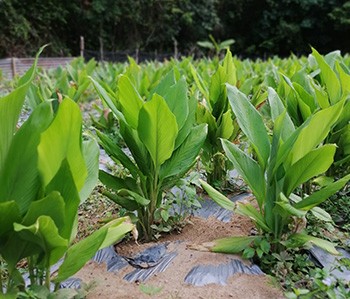 Preserve the moisture but make sure that you do not overload the plants with it. Transplant the sprouted rhizomes once the last frost passed. Water the turmeric an inch of water per week when there is no rain. Do not overwater since the roots may rot. Also, maintain a pH level of 4.5 to 7.5.
Preserve the moisture but make sure that you do not overload the plants with it. Transplant the sprouted rhizomes once the last frost passed. Water the turmeric an inch of water per week when there is no rain. Do not overwater since the roots may rot. Also, maintain a pH level of 4.5 to 7.5.
Turmeric can be planted with beans, peas, cilantro, and cardamom. Make sure to keep the weeds out so that the turmeric plant will have enough airflow.
Related: 10 Plants That You Should Never Plant Together (Video)
How To Harvest Turmeric
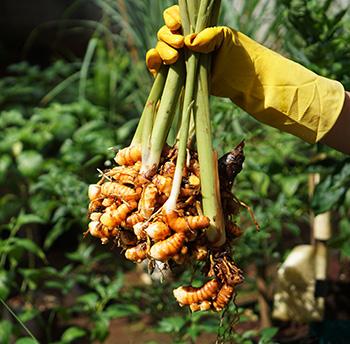 The main indication that turmeric is ready for harvesting is when it starts to wilt. This usually happens around 7 to 10 months after planting. When you see the stem and leaves turning brown, gently dig up the plant. Be careful when digging since you do not want to damage the rhizomes. Cut the foliage an inch above the roots. Wash the roots thoroughly and this will be the fresh turmeric that you can use for various culinary and medicinal applications.
The main indication that turmeric is ready for harvesting is when it starts to wilt. This usually happens around 7 to 10 months after planting. When you see the stem and leaves turning brown, gently dig up the plant. Be careful when digging since you do not want to damage the rhizomes. Cut the foliage an inch above the roots. Wash the roots thoroughly and this will be the fresh turmeric that you can use for various culinary and medicinal applications.
The harvested turmeric can last for up to 6 months in a fridge when placed in an airtight bag. For it to last longer, you can put it inside the freezer. But make sure that the skin is thoroughly air dried before storing them.
What Turmeric Is Good For And Natural Remedies Made From It
Turmeric is one of the underrated kitchen spices that holds many nutritional benefits. Aside from being a culinary addition to various dishes, turmeric contains an antioxidant called curcumin. Curcumin has many beneficial effects on health.
- Curcumin has anti-inflammatory properties. It fights against foreign substances that may enter the body while ensuring that any damage in the body is repaired. That is why experts believe that turmeric may be helpful in the treatment of heart diseases, metabolic problems, certain types of cancer, and other degenerative conditions. It also eases symptoms of rheumatoid and osteoarthritis when taken both orally and topically.
- The antioxidant properties are also vital for fighting off free radicals, which may damage cells resulting in aging and illness. Curcumin has the capacity to neutralize these free radicals to ensure that they cannot harm the body.
- Brain-derived neurotrophic factor, or BDNF, is a brain hormone essential for growing new neurons. BDNF has a role in learning and memorization. Curcumin helps boost the level of BDNF production. Thus, helping in better brain function and may ease symptoms of depression and Alzheimer’s disease.
- Other studies and reviews show that the curcumin that turmeric contains is also useful for preventing and treating diabetes. Though studies conducted were done on animals as subjects, this may become a basis of its effectiveness in helping diabetic patients in the future.
- Another benefit one can derive from turmeric is how it can be used on the skin. It has antimicrobial properties, and along with its antioxidant and anti-inflammatory effects, can work wonders on the skin. For instance, it may be useful for the treatment of skin conditions such as psoriasis, acne, and eczema. However, this usefulness may require more studies to ensure its safety and efficacy.
- Additionally, turmeric may help prevent eye degeneration such as glaucoma. Glaucoma is one of the causes of blindness in older people. Fortunately, preliminary studies show that topical use of curcumin may help offset this degeneration. Further studies are needed to get more proof and understand how turmeric benefits the eyes.
What Parts Of Plants Are Used For Remedies?
Most people use the rhizome or root part of turmeric. It is where curcumin can be found the most. The rhizome is also used in powder form most of the time. People add turmeric powder to their cooking since it is a basic ingredient in curry powders. It can also be found in drinks and flavored dairy products. Turmeric root is also used in various applications such as skin ointments and poultice, and face masks, among others. Others also use turmeric leaves since they are edible.
Golden Turmeric Milk Recipe
Ingredients:
- 1 ½ cup milk of your choice
- 1 ½ tsp ground turmeric powder
- 1 tsp ground ginger
- ½ tsp pure vanilla extract
- ¼ tsp ground cinnamon
- 3 whole black peppercorns
- Honey to taste
Steps:
- In a small saucepan, combine all ingredients from milk to black peppercorns. Set heat to medium-low.

- Whisk or stir the ingredients until fully mixed. Cover and lower down the heat to low. Simmer for 5 minutes or until the liquid is hot enough. No need to wait for it to boil. Just ensure that the ingredients are thoroughly mixed in a hot drink.

- Remove from heat and strain the ingredients to remove the whole peppercorns.

- Add honey to taste and a dash of cinnamon on top.

How To Use:
You can drink the golden milk once a day. Do not overdo drinking turmeric to avoid the side effects of too much curcumin. You can also store turmeric milk for up to 3 days in a refrigerator. Though you can drink this any time during the day, some people who want to improve their sleep prefer drinking it at night.
Related: 1 Cup Before Bed Shrinks Belly Fat All Night (video)
What Plants Resemble Turmeric?
Turmeric
Feature
Turmeric
(Curcuma longa)
Ginger
(Zingiber officinale)
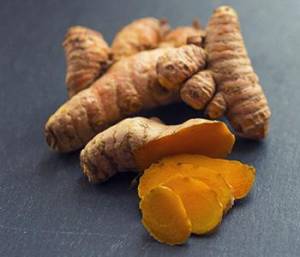
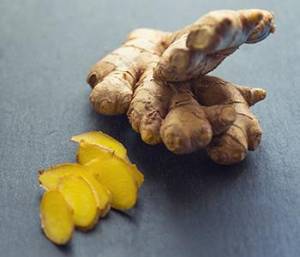
Size
3.3 ft
2 to 3 ft
Leaves
Oblong-shaped leaves, an average of 80-115 cm in length, and 30-48 cm in width.
Leaves are green with a translucent or transparent edge.
Flowers
Funnel-shaped flowers in the colors of white, yellow or pink. It is around 12 cm in length.
Small flowers grow on the spike. For mature ginger plants, flowers are mostly yellow-green in color with purple bases and cream-colored spots. Some varieties have bright yellow, orange or pink blooms.
Stem
Stems are thick and erect, rising from the rhizomes.
Ginger is a modified stem that grows horizontally under the ground
Scent
Neutral scent that can become minty or gingery when cooked
The scent is sweet and mildly peppery with a hint of ginger.
Warnings And Cautions
- For pregnant and breastfeeding women, the use of turmeric in small amounts for culinary purposes is allowed. Do not use turmeric in large amounts as a treatment since it can harm the baby by stimulating the uterus, which can lead to miscarriage. There are not enough studies held for the safe use of turmeric during breastfeeding. So, to keep the baby safe, avoid using it in large quantities.
- People with gallbladder should also avoid the use of turmeric. Turmeric may worsen gallstones or obstruct the bile duct. Another consideration is liver disease. Do not use turmeric if you have liver issues as it may worsen the problem. Also, the herb may inhibit iron absorption. Thus, it should be avoided by people with iron deficiency anemia (IDA) or other iron-related problems.
- It can also cause slow blood cutting. Hence, it can increase the risk of bleeding and bruising for those with bleeding disorders. Due to the slow blood clotting, the herb should also be avoided by those people who are about to undergo surgeries. Stop using turmeric for at least 2 weeks before your surgery schedule. Turmeric should not be used with other herbs that can affect blood-clotting such as dandelion, capsicum, evening primrose, ginger, garlic, red clover, among others.
- People who have hormonal issues should also refrain from turmeric use. Hormone-sensitive conditions such as some types of cancer and uterine fibroids may warrant the limited use of turmeric. It can also lead to decreased testosterone levels in males, which may hamper sperm movement and result in infertility.
Since turmeric helps in lowering blood sugar levels, it should be used carefully with diabetic medications. If used with other diabetic treatments, it might cause the lowering of blood sugar to an undesirable level.
If taking turmeric and allergic reactions occur such as developing hives, swelling, and difficulty breathing, stop using immediately and consult a physician.
Taking alternative medications such as turmeric has its benefits. However, it is important to consult with your physician, especially if you have any underlying medical condition or are taking prescribed drugs for treatments.
Warming Turmeric and Cayenne Pain-Relief Balm
50 Health Benefits of Turmeric

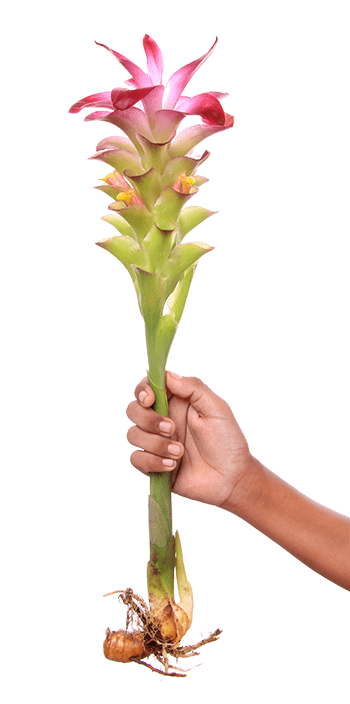
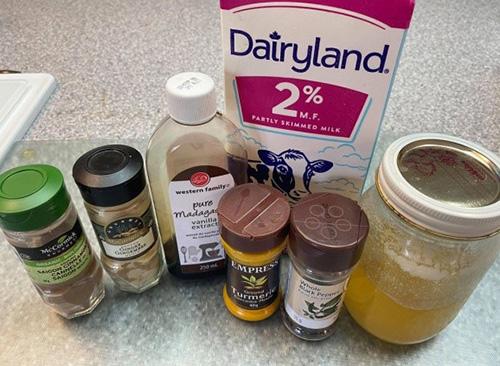
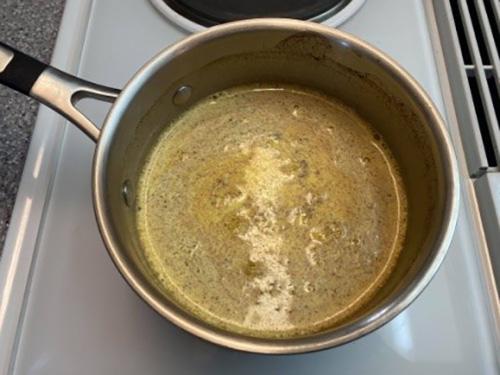
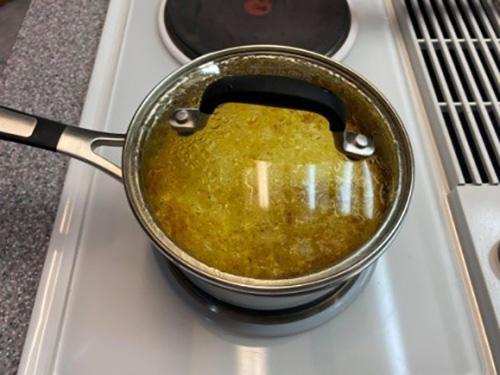
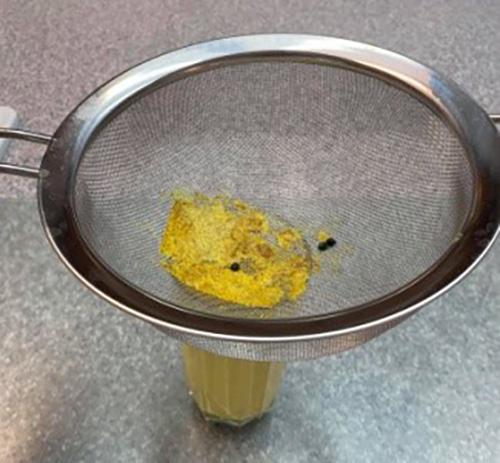
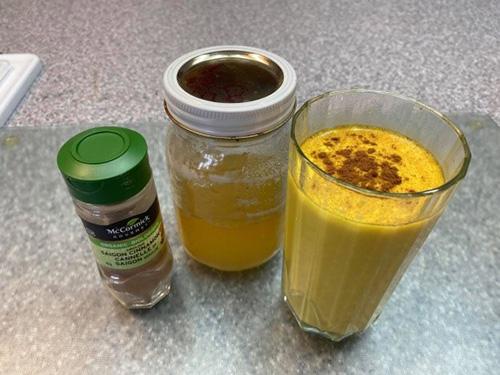

Great information! Question for you. I noticed in the Warnings and Cautions section you say “Turmeric should not be used with other herbs that can affect blood-clotting such as dandelion, capsicum, evening primrose, GINGER, garlic, red clover, among others,” but then you actually have a recipe for turmeric with ginger in the same article. Is ginger really not that big of a concern to take with turmeric then, or was it a typo to include it in that list? Thanks for the great information!
Good question!
Turmeric cured my chronic heart condition, and saved my life.
I would order moor if I though I would GET IT send to me
I placed a order for two books paid for it for the same TIME of $99.00
by MASTER CARD
only received the one for $50.00 not get the one for $49.00
the medical guyed I got the guide to wild foods only Please ck. your RECORDS
Hi Joe,
Thank you for your interest in our work.
Please check your personal email. I sent you an email regarding your book order.
Many blessings and good health!
can you get the same benefits by just eating the root?
Hi Clinton,
Yes, you can get the same benefits.
Fresh turmeric root is available at some specialty grocers or health food stores.
Be aware that turmeric root can stain your skin, so wear gloves when handling it. Slice the root or cut it into pieces and eat it by itself, or add it to salads or other fresh dishes. Turmeric root has a peppery, slightly bitter flavor and is generally considered safe at doses of between 1.5 and 3 grams daily.
It could interact with some medications, such as blood thinners, drugs that lower stomach acid, and diabetes medicines, so discuss its use with your doctor to decide if turmeric might be helpful for you.
Many blessings and good health!
hi nicole you know what kind of herb for female contraception. Most women take contraceptive chemistry. help with this question.
I have bad feet. It got to the point that I could hardly walk. I went to a foot specialist, over the course of three months he gave me three shots of cortisone. Nothing he did helped my aching feet. Then I heard about turmeric. In two weeks my feet were 95% better. Turmeric worked for me like a miracle.
Hi Joe,
Thank you for your sharing this with us.
We are glad to hear that your feet are better and turmeric worked well for you.
I hope each new day brings you closer to a full and speedy recovery!
Hi Joe,
Could you please tell me, in what form did you take? Pills? The powdered stuff? Fresh root? And how much/often did you take it.? My brother suffers with foot pain as well, and has been getting those shots (not helping), thought maybe this might help him.
Thanks, and wishing you continued good health!
Hi Carol,
I tried a lot of brands. A couple of the more expensive brands didn’t work. The two that I found to work best are “herb science” on the box it has a picture of a pill with an = sign and 7 pills. It was $30 for a 3 month supply. I was getting them at BJs whole sale club. They stopped selling that brand and started selling “Qunol” turmeric soft gels. They are $25. for a 3 months supply and I believe they both worked very good. I hope this helps you and your brother. I have been taking turmeric for about six years now and it worked like a miracle for my feet.
HI Joe,
Thank you so much for that info! Sorry for the delay in response, I am just seeing this. I must not of signed up to get the new comments. But I will tell my brother to try this. Bless you, and I hope you stay healthy….
Your welcome Carol, I would love for you to tell me that it worked good for your brother.
I noticed the 2% milk in your golden milk recipe. Turmeric requires two other ingredients in order for the body to metabolize it: healthy fat (WHOLE milk, raw if you can get it) and pepper. You have the pepper in the recipe but as you are not using full fat milk, you are not getting the entire benefits from the turmeric. WHOLE milk is NOT the enemy! Sugar is, and it is the only milk version (vs: 1%, 2%, skim) that doesn’t have sugars and other ingredients added to it to make it taste better. Full fat, whole milk is very healthy for you especially if you can get it raw. Here in Oregon, we can’t buy raw cows milk.
That’s good to know. We have it right here near me here in MA. Thank you for the post!
Please proofread this article as there are several typos that should be corrected.
E.g. It says “It can also cause slow blood cutting”. You meant “clotting” — not “cutting”.